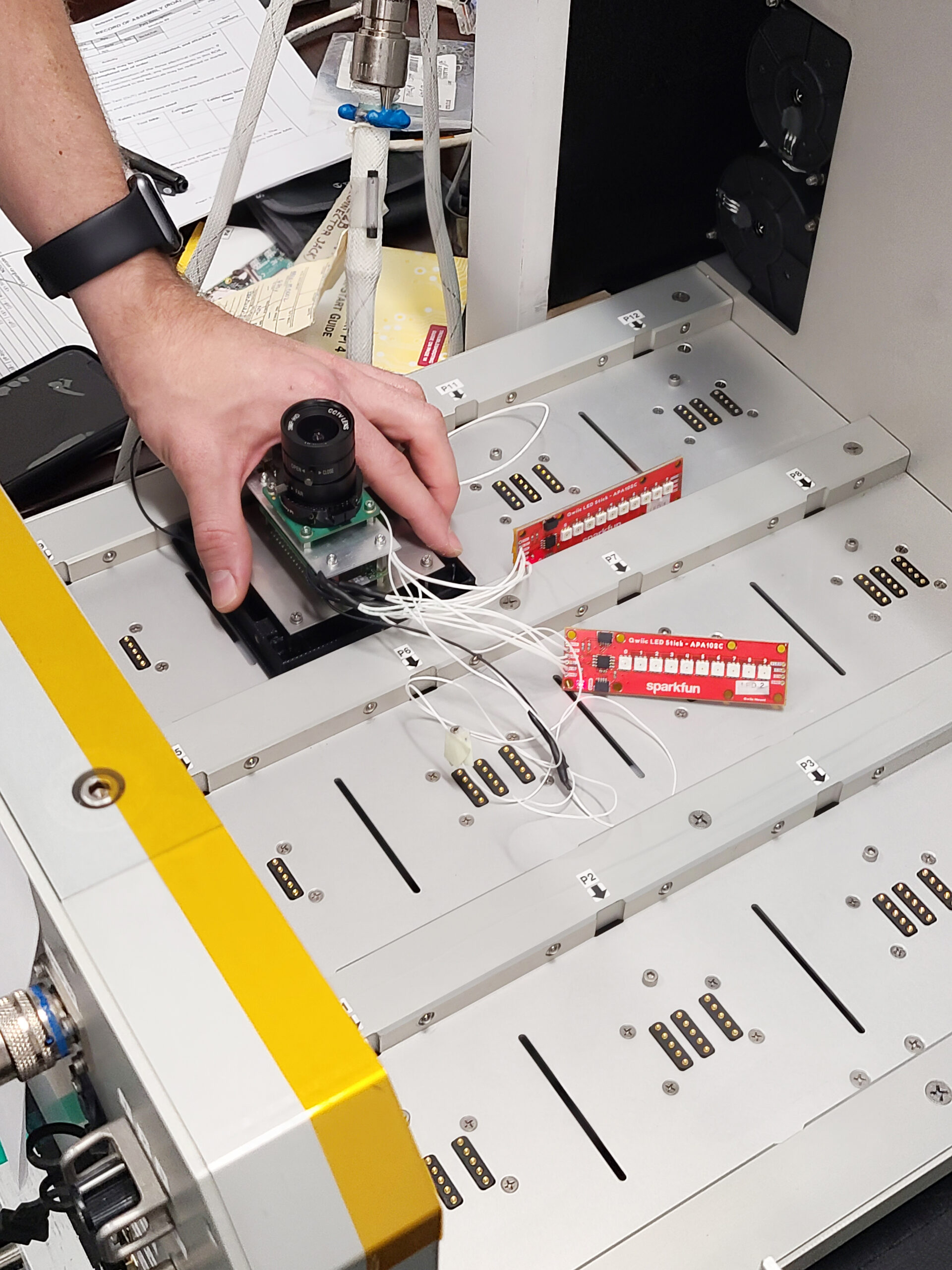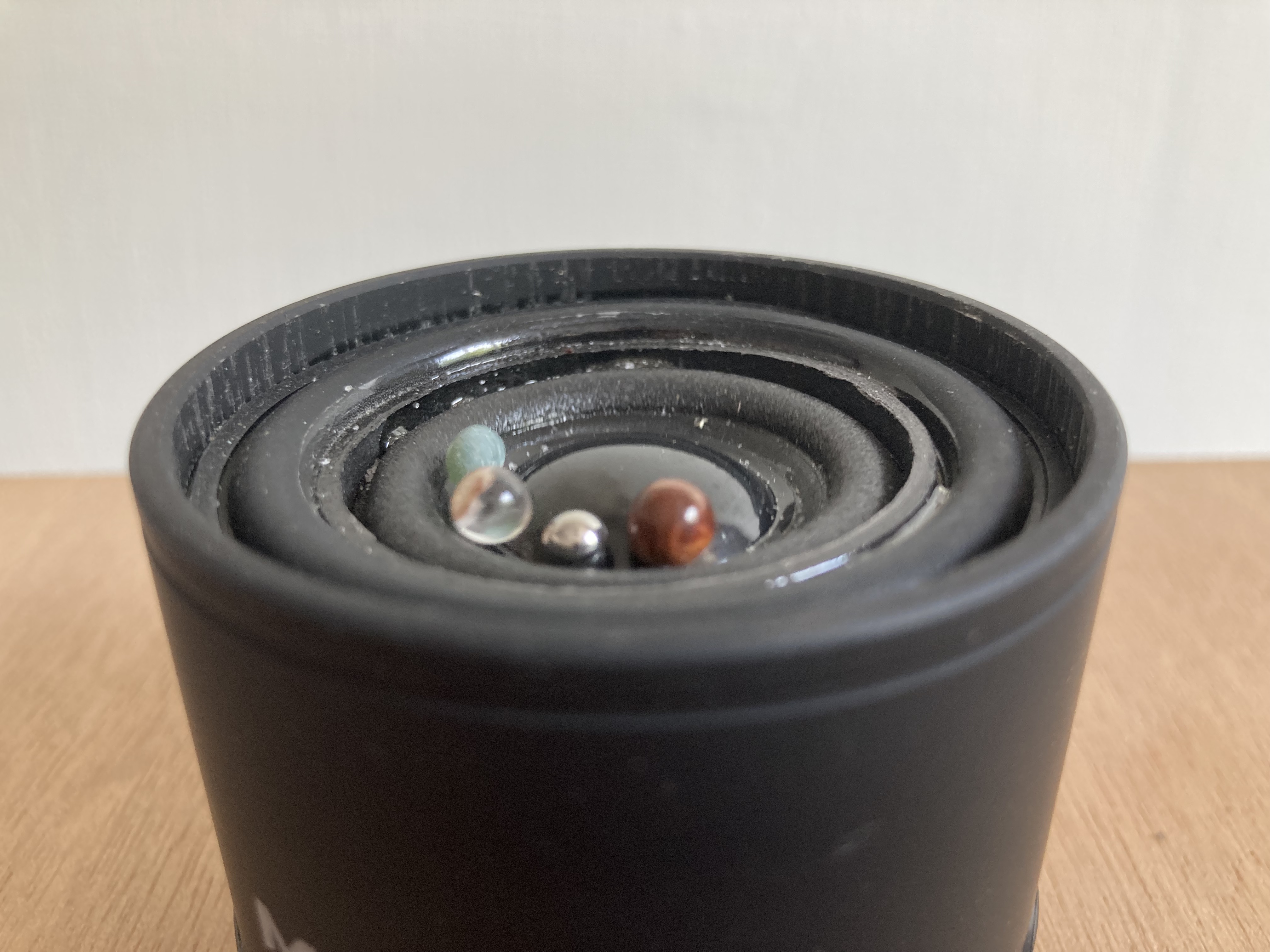Quiet Spheres

My artwork consists of two parts: a musical instrument which remains on earth, and five spheres which travel into space. The electronic musical instrument vibrates below the reach of human hearing. But as soon as the miniature spheres are placed on the surface, the sound becomes audible, and you can hear the music.
The five spheres are made of five different materials (steel, silver, pearl, howlite, lodolite). Each sphere has its own mass, color, reflectivity, and texture. Each also has its own sound when placed on the instrument. While in their transparent space gallery, they will move around in microgravity, rotating around each other, bumping into each other and into the sides of the cube. Each one influences the others, in an ever-changing artwork, a slow dance. And they make tiny sounds, which only they can hear.













The five spheres are voyaging on the International Space Station, and will stay there for the duration of the mission. Meanwhile, back on earth, I have also built a musical instrument, which ‘activates’ the spheres. Imagine a flat board with five speakers embedded in it. Each speaker is vibrating on a low frequency, too low for human ears to hear. But as soon as one of the tiny spheres is placed on its speaker, the sound is suddenly audible.
The musical instrument is called the “QSI” (for Quiet Spheres Instrument). While the spheres are traveling on the ISS, the QSI will be silent, even though it continues to vibrate at low frequency. But when the spheres are re-placed on the instrument, its vibrations will be suddenly audible. The spheres will bounce up and down on the speakers, creating a buzzing sound, and also a visual demonstration of their activity.

The QSI project deliberately illustrates several concepts – one is my admiration for the random, never-repeated motion of the bouncing spheres; and the other is my interest in silence. Why would silence be important to our understanding of our relationship to outer space? The moon, after all, is essentially silent. But the sun is not, nor is the earth. The International Space Station itself is quite noisy. Yet space itself is silent, and I like to imagine that the QSI provides an illustration of that – when we remove the spheres from the instrument, it is like removing the atoms from a bell jar – we create a vacuum – whether scientific or artistic.



This artwork is inspired by vibrations, cycles, and the attraction and repulsion of bodies in space. The spheres themselves have a mysterious quality – they contain the possibility of making music, but only do so when placed on the instrument. The instrument plays its own eternal music. Indeed the spheres will become voyagers, not telling their story until they return to earth. Their constant bumping during the trip will ensure that they have slightly changed. Their sound will be different when they return to us.







How do you know the spheres can hear each other’s tiny sounds. Do they return to earth on April 1st to tell you about their bumpy ride? And will their adventures in sound creation be recorded audibly, or in silence? Excellent documentary photos.
Yes, it will be a bumpy ride for them! I can’t wait to hear what they have to tell us when they return…
I love your project Guy. Very beautiful. It doesn’t hurt that your spheres have a mapping quality to planets and materials on earth. Someday I hope to invite you to our classroom at Scripps. I wonder what the voice of the pearl sounds like 😉
yes, I like the mapping, especially that it’s not quite literal – there is enough ambiguity to make it interesting.